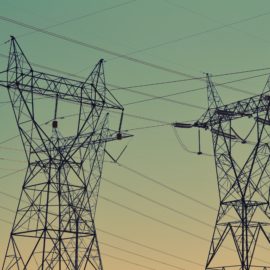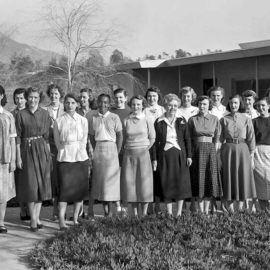

This article is an excerpt from the Shortform book guide to "The Silk Roads" by Peter Frankopan. Shortform has the world's best summaries and analyses of books you should be reading.
Like this article? Sign up for a free trial here.
How did the global balance of power shift in the 20th century? How did these balances shape wars, and how did wars shape them?
In The Silk Roads, historian Peter Frankopan identifies Central and Western Asia as the battleground where the great empires of history rose and fell. He argues that understanding the East is crucial to our understanding of the world—particularly for Westerners who have lost this global perspective.
Keep reading for Frankopan’s discussion of the global balance of power in the 20th century.
Global Balance of Power in the 20th Century
Europe’s power and influence over the rest of the world grew in the centuries prior to the modern era, with that power particularly concentrated in the hands of a few major players—Great Britain, France, Germany, and Russia. The global balance of power would change dramatically by the end of the 20th century.
As the 19th century gave way to the early 20th century, British imperial policy became vitally concerned with boxing in Russia and establishing a buffer between Russian possessions and British interests in India, China, and Oceania. The British settled on a policy of accommodating Russian ambitions in Central and Eastern Europe—effectively giving the Russians a freer hand in their competing territorial claims with Germany in exchange for Russia limiting its expansionist aims in Asia.
Britain’s strategy to appease Russia would come at the expense of souring British relations with the rising and powerful German Empire. Frankopan argues that this maneuvering by the British played a decisive role in marching Europe and the world toward World War I—all to protect British interests in Asia.
World War I
World War I would forever alter the international order, according to Frankopan. The old colonial empires of Britain and France, although victorious in the war, emerged greatly weakened, while the old multinational empires of Russia, Germany, Austria-Hungary, and the Ottomans collapsed altogether. Out of the ashes of the devastating conflict would arise new international economic, political, and military rivalries that still dominate our world today.
Frankopan writes that, in the early 20th century, the British secured exclusive access to Persian oil resources, largely through lavish bribes conferred upon the corrupt ruling dynasty. This would prove decisive to British victory in World War I. To protect their access to oil, the British after World War I set up puppet governments and figurehead leaders all across the Middle East, redrawing national boundaries to get the pliant political arrangements they desired.
World War II
The instability of the post-World War I world enabled the rise of aggressive totalitarian regimes in Europe—most notably, Nazi Germany and the Soviet Union. According to Frankopan, the East would once again prove to be the hinge upon which global politics swung. Aggressively expansionist, the Nazis sought to conquer the rich agricultural lands of Eastern Europe and the oil-producing regions of Western Asia and the Caucasus to fulfill their dreams of a great land empire colonized by ethnic Germans and depopulated of those they deemed racial inferiors—chiefly Jews and Slavs. These ambitions were the seeds of the Nazi campaign of extermination that would culminate in the Holocaust.
| Generalplan Ost: Nazi Ambitions in Eastern Europe The Holocaust, which saw the systematic murder of six million Jews across Europe (two-thirds of Europe’s pre-war Jewish population), was only the starting point of the Nazis’ genocidal aims. The General Plan for the East (Generalplan Ost) was the Nazi vision for the racial reordering of Eastern Europe. Had the Germans won the war on the Eastern Front in 1941-42 and defeated the Soviet Union, the General Plan called for the extermination of 10-20 million Slavic people outright and the enslavement of millions of others. Through deliberate starvation and death by forced labor, the native Slavic population of Eastern Europe would be all but eliminated, enabling new German immigrants to settle on and exploit the rich agricultural lands and use the surviving Slavs as a slave labor force. |
Nazi agents and industrialists had made important technological, economic, and political inroads in the Middle East and Western Asia during the 1930s, with much of the population seeing Germany as a trusted friend and counterweight to British influence—aided in no small part by shared antisemitism between the Nazi operatives and local Islamic elites.
(Shortform note: These mutual sympathies between Nazis and some of the more extreme elements of the Arab nationalist leadership can be seen in the disproportionate number of ex-Nazis who managed to escape prosecution for war crimes after World War II by settling in Arab countries. These figures included Alois Brunner, who settled in Damascus; death camp commandant Franz Stangl, who likewise made his home in Damascus; and Düsseldorf Gestapo leader Joachim Daumling, who settled in Cairo and helped establish the Egyptian secret service under president Gamal Abdel Nasser.)
The Postwar World
While the combined military and economic might of the US, the British Empire, and (by far most importantly) the Soviet Union brought about the defeat of Nazi Germany in 1945, the human and economic toll of the war would significantly reshape the postwar political order.
In particular, Frankopan writes, Britain emerged from the conflict economically, militarily, and politically exhausted. In the postwar world, it was clear that there would be a new chief power in the West—the United States.
(Shortform note: Some historians have used the term Pax Americana to describe the era of US economic and military hegemony that began in 1945 after the end of World War II. The term is a reference to the earlier Pax Romana and Pax Britannica—Roman Peace and British Peace respectively—when these earlier superpowers oversaw an era of relative global peace and stability. Some scholars point to the enactment of the Marshall Plan, a 1948 US initiative to provide massive foreign aid to rebuild and modernize Western Europe after the war, as the beginning of the Pax Americana.)
After the war, the US and the Soviet Union would emerge as the world’s two rival superpowers, engaging in a decades-long economic, military, political, and ideological conflict known as the Cold War. But, while the participants in this new game of global power might be different, the stakes and setting of the conflict would be where they had been for millennia—the rich and strategically vital heartland of the Middle East and Asia. Both superpowers jockeyed with one another for position in countries like Iran and sought to curry favor with the local ruling elite in these countries, usually by helping to fund lavish military and infrastructure projects.
(Shortform note: Although Frankopan and other historians of the Cold War describe the period in terms of a bi-polar world split between the capitalist West led by the US and the communist Eastern bloc led by the Soviets, the real picture is more nuanced. Some scholars argue that the 1950s Sino-Soviet split—the severing of relations between the two chief communist powers, the Soviet Union and the People’s Republic of China, over ideological disagreements about Marxist-Leninist principles—created a tri-polar world, in which the Americans, Soviets, and Chinese formed distinct and competing spheres of influence.)
Cold War Politics
Frankopan writes that, for the US, protecting what it saw as its vital strategic interests in Asia against Soviet encroachment trumped any high-minded ideals about democracy or human rights. The Americans financially and militarily supported pro-US—but corrupt and autocratic—regimes across the Middle East, Central and Western Asia, and the Pacific, such as Iran, Iraq, Indonesia, and Cambodia.
The US established and supported these governments to safeguard its own interests, with access to oil being perhaps the most important. The military support these regimes received from both the Americans and Soviets was staggering, with the Middle East accounting for half of global arms purchases and nuclear technology transfers by the mid-1970s.
(Shortform note: The diplomatic school of thought described by Frankopan here is sometimes known as Realpolitik—designing foreign policy solely on pragmatic grounds and downplaying any commitment to ideology or moral and ethical principles. In this respect, it shares aspects of its philosophical approach with those of realism and pragmatism. Prominent American figures associated with the Realpolitik school of thought during the Cold War include President Richard Nixon, Secretary of State Henry Kissinger, and National Security Adviser Zbigniew Brzezinski.)
The Decline of the West and the Resurgence of the East
Although the US and Soviet Union emerged from World War II as the world’s superpowers, the East would begin to reassert its political centrality and chart its own destiny in the latter third of the 20th century and into the 21st.
Oil Shocks of the 1970s
America’s willingness to engage in risky political maneuvering for control of Middle Eastern oil resources showed that, for all its economic and military might, the country was highly vulnerable to oil supply shocks. Indeed, Frankopan notes that this was true of nearly all Western economies. In 1973, the Arab members of the Organization of Petroleum Exporting Countries (OPEC) imposed an oil embargo on all the countries that had supported Israel in the just-concluded Yom Kippur War. This led to massive oil price hikes and inflation in the United States and Western Europe. For the first time in decades, people in the West saw how vulnerable their governments and economies were to geopolitical developments on the other side of the world.
(Shortform note: Some commentators argue that the oil embargo actually produced long-term benefits for the US and other industrialized countries. In response to the crisis, the US introduced new auto standards that raised domestic cars’ efficiency—enabling them to use about 20% less fuel to drive the same distances—while new regulations similarly boosted the efficient energy usage of buildings, factories, and appliances. Because of these new efficiency standards, the US economy grew 27% from 1977-1985 while total oil imports fell 50% and imports from the Persian Gulf fell by a whopping 87%.)

———End of Preview———
Like what you just read? Read the rest of the world's best book summary and analysis of Peter Frankopan's "The Silk Roads" at Shortform.
Here's what you'll find in our full The Silk Roads summary:
- Why the Silk Roads have always been history’s crucial connection point
- Why understanding the East is crucial to our understanding of the world
- A history of the Silk Roads, from ancient times to the 21st century






